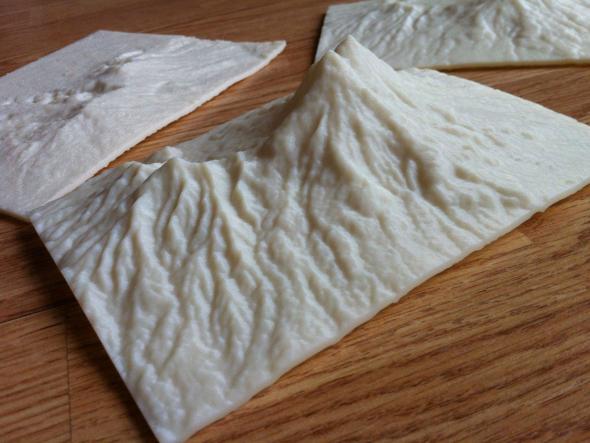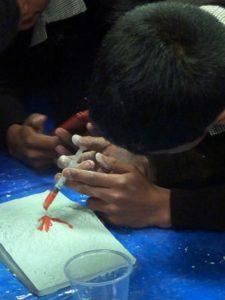
View of the Colima Volcano as the eruptions began. [Image courtesy of Hannah Rose Mendoza].
The campground to which we had been headed was being evacuated as lava spilled down the sides of the Volcán de Colima and we were redirected to another campground a couple of miles back. There, we set up camp with a clear view of the billowing smoke and the late night glow of the red hot lava. The deep rumbling melody of the continuous eruptions was unlike anything I had ever heard before. We were a safe distance away, and it was breathtaking.
There are few things in nature more terrible and more awe-inspiring than an erupting volcano. The slow time scale at which eruptions occur can give people a false sense of security. The volcano Popocatépetl, located 43 miles southeast of Mexico City, has been relatively quiet and people have built their homes on its slopes hedging their bets against a major event. In the last 48 hours, however, the mountain has begun to make some ominous gestures and has had four minor eruptions throwing ash and rocks into the air and giving rise to a level two alert, meaning residents should prepare to evacuate.

The 3D printed model in the foreground is of San Vicente volcano in El Salvador. [Image: Ian Saginor]
“In many areas, including around Popo, people won’t necessarily believe you when you tell them something is happening. They’ll say, I’ve lived here all my life, why should I leave? [With these models] they could see how [the lava] would flow and just miss their village. I had the feeling the children took a lot away from this, to have this small-scale representation that shows how close they really are to the volcano and how important it is to be aware of the topography around you.”
More importantly, the kids can take their flow models home and show their parents, helping to encourage an understanding of an eruption scenario before an emergency makes itself present. Hopefully Popo will stop grumbling and settle back into a peaceful slumber, but even should that happen, it’s only a matter of time before it wakes again and this activity is one part of trying to mitigate the horrifying results of a disaster faced unprepared. Discuss this further over in the 3D Printed Volcano forum at 3DPB.com.
[Source/Images: National Geographic]Subscribe to Our Email Newsletter
Stay up-to-date on all the latest news from the 3D printing industry and receive information and offers from third party vendors.
You May Also Like
3D Printing Unpeeled: New Arkema Material for HP, Saddle and Macro MEMS
A new Arkema material for MJF is said to reduce costs per part by up to 25% and have an 85% reusability ratio. HP 3D HR PA 12 S has been...
3D Printing News Briefs, January 20, 2024: FDM, LPBF, Underwater 3D Printer, Racing, & More
We’re starting off with a process certification in today’s 3D Printing News Briefs, and then moving on to research about solute trapping, laser powder bed fusion, and then moving on...
3D Printing Webinar and Event Roundup: December 3, 2023
We’ve got plenty of events and webinars coming up for you this week! Quickparts is having a Manufacturing Roadshow, America Makes is holding a Member Town Hall, Stratafest makes two...
Formnext 2023 Day Three: Slam Dunk
I’m high—high on trade show. I’ve met numerous new faces and reconnected with old friends, creating an absolutely wonderful atmosphere. The excitement is palpable over several emerging developments. The high...
































